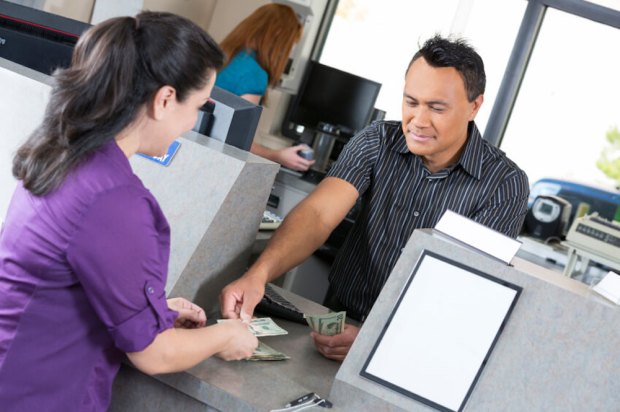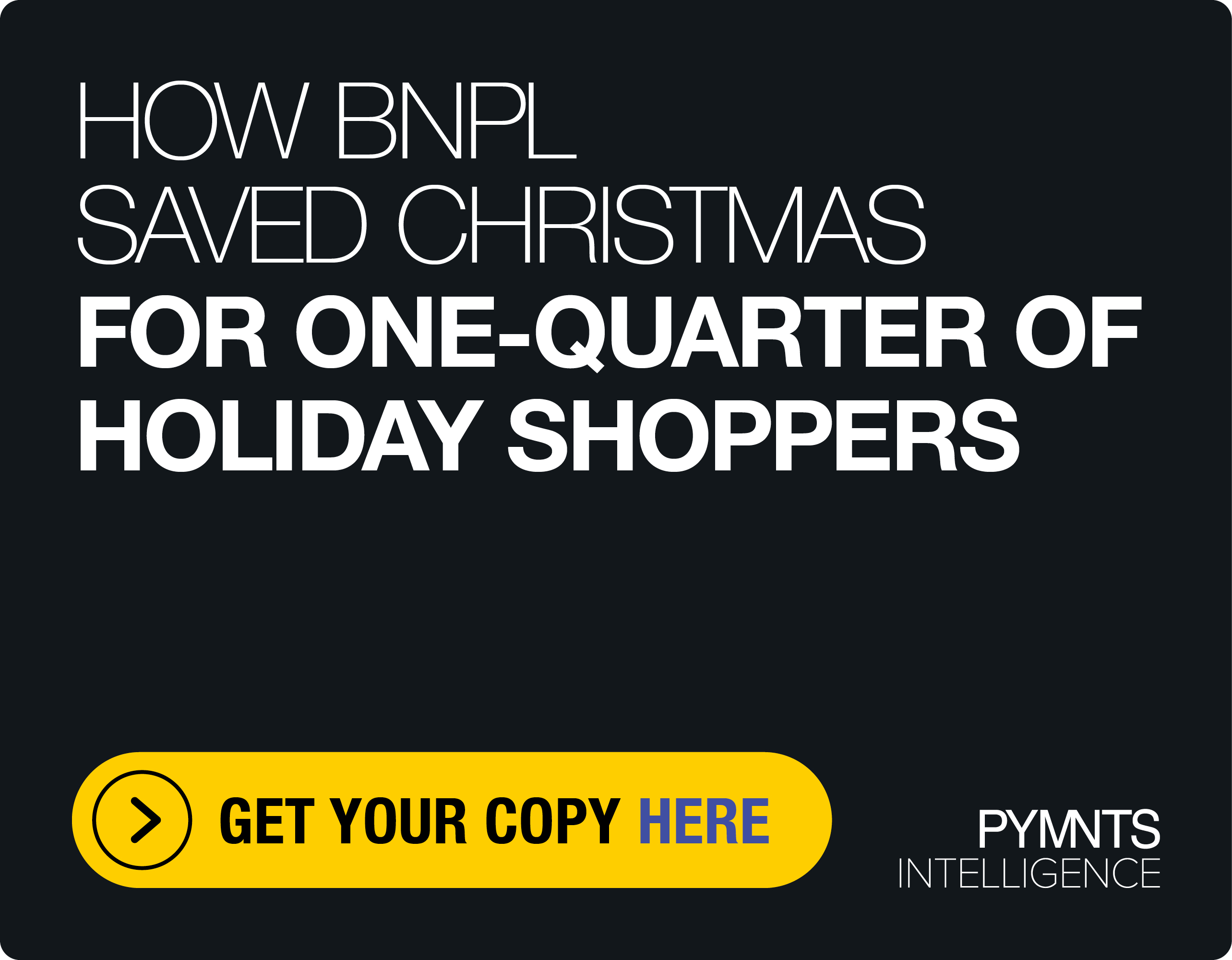Instant Payments Are Killing The Check (Not So Softly)

No one likes getting a check.
No one.
And we have the data to prove it.
When ranked against all other possible methods of getting payments, the recently launched PYMNTS Disbursement Satisfaction Index™ ranks checks dead last, with a satisfaction score of 4.4 out of 100 possible points by the more than 3,000 consumers we asked.
It’s not zero, but it’s pretty darn close.
Yet companies still send them – $22 trillion worth of them, in fact, every year. Consumers may not write many of them anymore, but as we know from our survey, they keep getting them.
As Drew Edwards, chief executive officer at Ingo Money, told Karen Webster in a recent conversation, that happens for a variety of reasons. Some are for relatively low dollar amounts written out to babysitters, dog walkers and tutors by people who, for some reason, haven’t gotten with the P2P program.
But some of them are fairly large.
“I think back to a customer [we had] who used to drive up to our bank branch in a $75,000 Escalade every Friday to cash a $50,000 check,” Edwards told Webster. “He was a tree excavator working for large general contractors, and that was his weekly disbursement for the work he and his team were doing. So here he would come to our bank and use our instant check cashing service, and then walk across the street to Bank of America to deposit his funds into his own bank account, because if he deposited that check, he’d be waiting a week for it to clear.”
The reality, Edwards noted, was that the individual couldn’t wait a week – he had payroll to make. In fact, Edwards continued, most people with checks in their hands probably can’t wait a week. Disaster victims in Florida or Texas who just got insurance claims payments by check can’t wait an extra week for those checks to clear to begin fixing their lives. The paycheck-to-paycheck worker – also known as 57 percent of Americans – really can’t wait an extra few days for a check (or a collection of them from a few jobs) to clear, either.
Nor, Edwards noted, can they afford what happens if by some chance someone passes them a bad check.
“Checks are a buggy whip in the age of cars – not just because they are printed on pieces of paper, but also because the underlying regulatory structure of the check shifts all of the liability to the recipient of the check,” Edwards said, adding, “which is nuts.”
And it’s avoidable, says Edwards – because banks can now offer their customers something better than the standard operating procedure for check cashing, which also doubles as a smart way for banks to boost their bottom line.
Actual Check Cashing
What most banks offer today isn’t really check cashing, Edwards countered. What bankers really do is run a few algorithms against the customer’s account, then glance at the balance to make sure they have sufficient funds to cover the check if it bounces and, if they do, they cash the check and send the customer on her way.
“The bank’s algorithms don’t let consumers have the money right away if they hold marginal balances or have a history of overdrafts,” Edwards told Webster. “This is the very consumer who needs this service, and this part of the banking system is built to be the opposite of what they need: instant money.”
If the check bounces, the bank takes the funds back from the customer.
Ingo Money offers banks another option, which shifts the risk away from both the bank and the customer.
Ingo offers an immediate funds availability option and essentially buys the check from the customer, as is the traditional check cashing model, and gives the customer all of their funds immediately for a fee. If the check bounces, Ingo is on the losing end of that risk calculus – though after over a decade in the risk assessment business, Ingo has gotten good at approving customers who truly need this service while effectively managing the losses from bad checks. The hard part is saying yes to that consumer who has overdrafts and/or marginal balances. Edwards told Webster that Ingo outperforms industry approval rates and regularly maintains losses below industry thresholds.
Some banks don’t offer instant check cashing because of reputational concerns. Edwards observed that many bankers are inherently skeptical of the concept of “check cashing” because they used to be the places in the bad parts of town with bars on the windows, leading many bankers to believe their customers were above patronizing those establishments.
But times have changed. A study Ingo conducted with Forrester found that up to 30 to 40 percent of one bank’s customers had visited another institution to cash a check within the previous 90 days. Moreover, when offered the chance to cash their check on a mobile device or at an ATM machine, four out of 10 times the bank’s consumers chose the “no risk” check cashing option over the traditional deposit.
Let’s All Go To The Bank Lobby – And Reap The Rewards
In an age of finely honed competition in financial services, Edwards said that banks simply can’t afford to let their customers get picked off because they don’t offer an irreversible 100 percent immediate funds availability option, aka check cashing. Banks must meet consumers and small business owners where they live, and that’s increasingly in the instant money economy.
Especially if they happen to be running into one of Ingo Money’s partner banks, which can offer all customers instant access to their funds, with no risk of future financial peril if the check happens to bounce.
Edwards said that in most cases, the actual technical work to fully integrate with Ingo’s API takes only a few weeks, although other bank processes take a bit longer. However, in many cases, within six months, the bank will be up and running with a new check cashing revenue stream and the incremental deposit accounts those checks bring along with them. According to the Forrester study, the bank attributes 20 percent of their new account acquisitions every year to this service. That one-two combo unlocks new opportunities for banks to offer more products and services to customers, generating even more new revenue on which the banks can build.
It’s also changing bankers’ minds about check cashing services and the customers they bring, said Edwards. Instead of viewing them as nuisance patrons that they’d rather not service, they’re realizing that check-cashing customers are average, middle-income consumers who just want to be sure their money doesn’t run out during the third week of the month. In fact, most check-cashing customers have bank accounts, and most marginal balance customers in a bank are check-cashing customers for some other provider.
By servicing these customers, banks stand to benefit in ways beyond just customer satisfaction. Many of the banks and companies using Ingo Check, Ingo Money’s instant check cashing product, are realizing additional streams of revenue from incremental fees, new customers walking through the door, and both new and existing customers opening up deposits or related accounts. Edwards said that being able to offer customers something different – the ability to instantly cash a check in a branch, at ATMs or on smartphones, without having to hang out in the lobby of a bank that’s not theirs – is a real advantage.
“When you have something every consumer is telling you they don’t like and isn’t working for them – well, then, let’s just fix it,” said Edwards.
